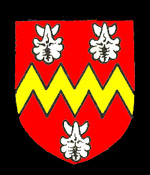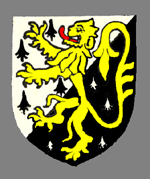The Manor of Biddenham
Volume III of The Victoria County History for Bedfordshire was published in 1912. It gives the history of the Manor of Biddenham as follows. The genesis of the manor seems to be in the four hides or so held in 1086 by Serlo de Rots as tenant of the overlord William Speke.
The Spekes continued as overlords until the death of Walter Speke, Baron of Warden in 1153. His Biddenham lands were inherited by his second sister Albreda, who was married to Geoffrey de Trailly. The Traillys remained overlords into the 13th century but by 1278 the manor appears to have come under the Honour of Gloucester, meaning the Traillys owed fealty to the honour rather than directly to the crown. The overlord in 1372 was Ralph, 2nd Baron Stafford, overlord in the right of his wife Margaret de Clare. Thomas, 4th Baron Stafford was overlord at his death in 1392 and the last reference to the Staffords as overlords dates to 1460 when Humphrey, 7th Baron Stafford and 1st Duke of Buckingham died. It is suggested that when Humphrey's grandson, Henry, 8th Baron Stafford and 2nd Duke of Buckingham was executed for treason by Richard III (1483-1485) in 1483 that the overlordship reverted to the crown.
Serlo de Rots was William Speke's tenant of the manor in 1086 - a position known as mesne lord of the manor. The manor seems to have passed from this family to the Passelowe family, which is first mentioned as mesne lord in 1203. In 1337 William Passelowe conveyed the manor to Nicholas Fermbaud. Nicholas was succeeded by John but in 1367 John Woodville is stated to ne the lord - he may have married John Fermbaud's daughter.

The Dyve family coat of arms
In the 15th century the manor passed to the Dyve family of Bromham. The manor remained in that family into the 18th century. The most famous of the Dyves was Sir Lewis, an ardent Royalist, who raised a regiment of foot which fought for King Charles I (1625-1649). Sir Lewis was made Governor of Sherborne Castle and Commander in Chief of the County of Dorset. Sherborne fell to Parliamentary armies in 1645 and the castle left in the ruinous state in which it remains today. Sir Lewis was captured at Sherborne and his estates were then sequestered by parliament. He was sent to the Tower of London but escaped and went into exile until Charles II (1660-1685) returned as king in 1660. He died in 1669.

The coat of arms of the Trevor family, Viscounts Hampden
In 1708 the manor was sold by Sir Lewis' son Lewis to Sir Thomas Trevor, Solicitor general 1692-1695, Attorney General 1695-1701 and Chief Justice of the Common Pleas from 1701 to 1714. He was raised to the peerage as 1st Baron Trevor in 1712. The manor then remained in the Trevor family until 1764 when Robert Trevor, under the terms of his maternal great-grandfather John Hampden, assumed the name Hampden and was created Viscount Hampden in 1776. When the 3rd Viscount Hampden died in 1824 the manor passed to a relative, George Rice Rice, son of 3rd Baron Dynevor who succeeded to his father's title in 1852 when his estate passed to his daughter, a Miss Rice Trevor. When she died the manor passed to her great-nephew Trevor Wingfield and the manor then remained in the hands of the Wingfield family.